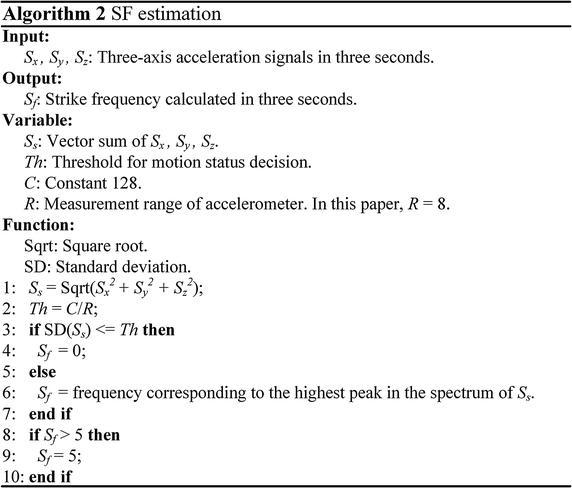Design and implementation of a BSN-based system for plantar health evaluation with exercise load quantification
- PMID: 28774311
- PMCID: PMC5543572
- DOI: 10.1186/s12938-017-0389-9
Design and implementation of a BSN-based system for plantar health evaluation with exercise load quantification
Abstract
Background: Plantar pressure measurement has become increasingly useful in the evaluation of plantar health conditions thanks to the recent progression in sensing technology. Due to the large volume and high energy consumption of monitoring devices, traditional systems for plantar pressure measurement are only focused on static or short-term dynamic monitoring. It makes them inappropriate for early detections of plantar symptoms usually presented in long-term activities.
Methods: A prototype of monitoring system based on body sensor network (BSN) is proposed for quantitative assessment of plantar conditions. To further assess the severity of plantar symptoms which can be reflected from the pressure distribution in motion status, an approach to conjoint analysis of pressure distribution and exercise load quantification based on the strike frequency (SF) and heart rate (HR) is also proposed.
Results: An examination was tested on 30 subjects to verify the capabilities of the proposed system. The estimated correlation rate with reference devices ([Formula: see text]) and error rate on the average ([Formula: see text]) of HR and SF indicated equal measuring capabilities as the existing commercial products . Comprised of the conjoint analysis based on HR and SF, the proposed method of exercise load quantification was examined on all subjects' recordings.
Conclusions: A prototype of an innovative BSN-based bio-physiological measurement system has been implemented for the long-term monitoring and early evaluation of plantar condition. The experimental results indicated that the proposed system has a great potential value in the applications of long-term plantar health monitoring and evaluation.
Keywords: Exercise load quantification; Heart rate; Plantar pressure; Strike frequency.
Figures














Similar articles
-
Combined application of FBG and PZT sensors for plantar pressure monitoring at low and high speed walking.Technol Health Care. 2015;23(1):47-61. doi: 10.3233/THC-140867. Technol Health Care. 2015. PMID: 25351277
-
A pressure sensing system for heart rate monitoring with polymer-based pressure sensors and an anti-interference post processing circuit.Sensors (Basel). 2015 Feb 2;15(2):3224-35. doi: 10.3390/s150203224. Sensors (Basel). 2015. PMID: 25648708 Free PMC article.
-
Development of a high resolution plantar pressure monitoring pad based on fiber Bragg grating (FBG) sensors.Technol Health Care. 2015;23(6):785-94. doi: 10.3233/THC-151038. Technol Health Care. 2015. PMID: 26409525
-
[Heart rate variability and physical exercise. Current status].Herz. 2006 Sep;31(6):544-52. doi: 10.1007/s00059-006-2855-1. Herz. 2006. PMID: 17036185 Review. German.
-
Non-invasive physiological monitoring of exercise and fitness.Neurol Res. 2011 Jan;33(1):3-17. doi: 10.1179/1743132810Y.0000000014. Neurol Res. 2011. PMID: 21208531 Review.
References
MeSH terms
LinkOut - more resources
Full Text Sources
Other Literature Sources
Medical

